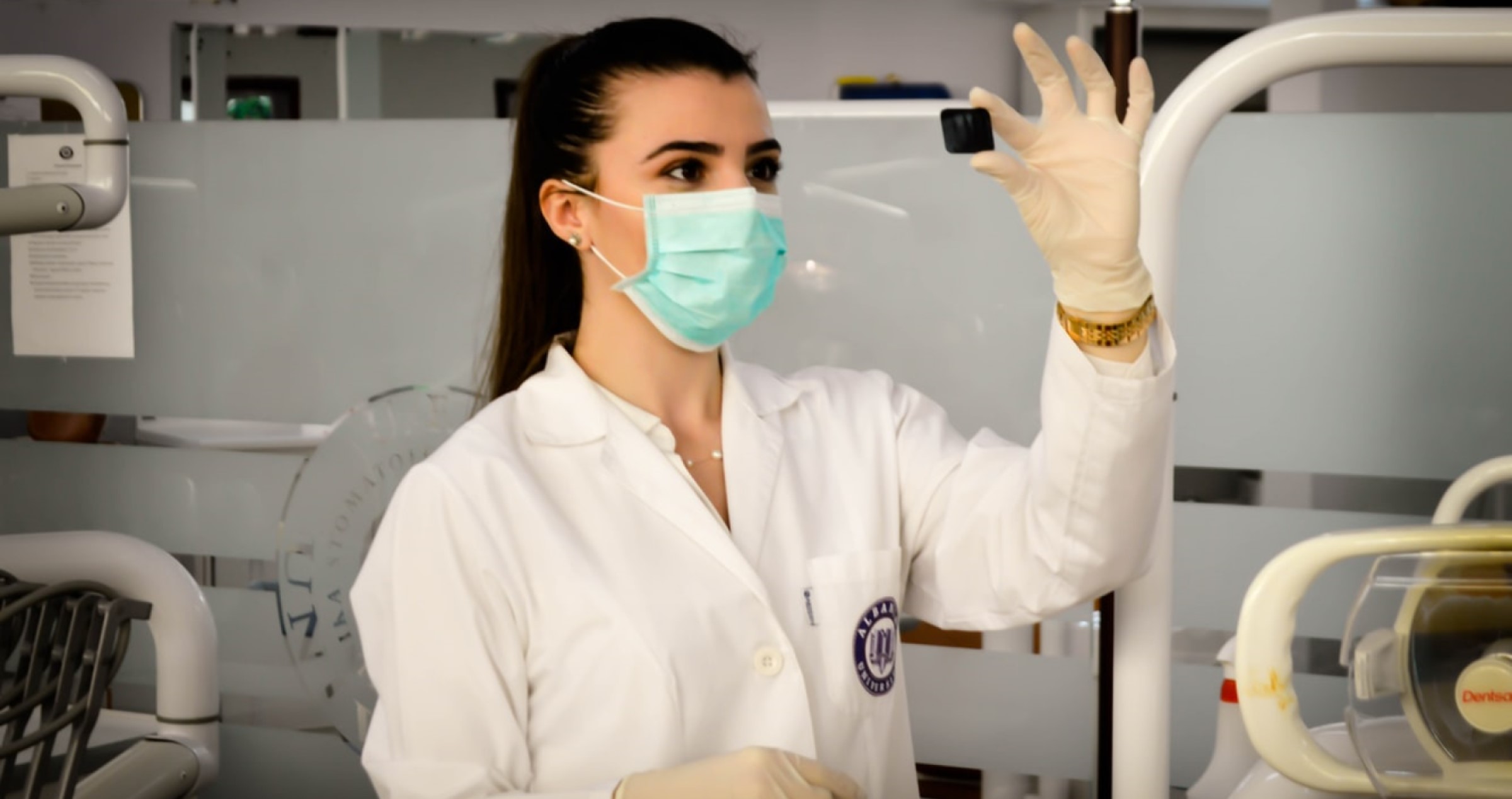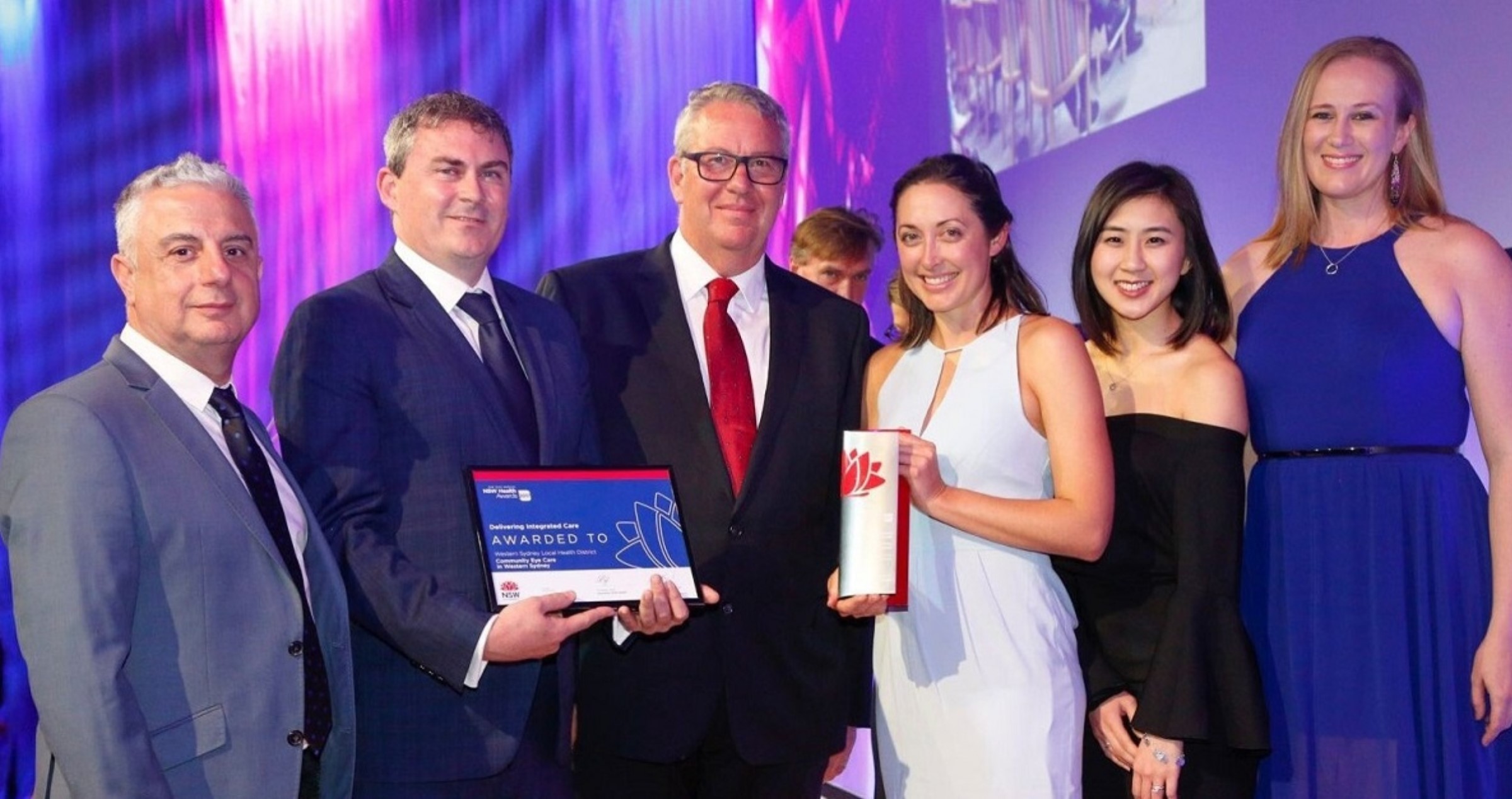Share
The award winning Glaucoma Clinic at Westmead supports optometrists in delivering ongoing, high quality collaborative care.

The prevalence of glaucoma among adults aged 40 years and older is 3.7 per cent, and it is estimated that a further 50 per cent of glaucoma cases go undiagnosed. Based on these figures, in the Western Sydney region, which has a population of close to one million people, there would be around 37,000 patients with glaucoma.
Westmead Hospital Eye Clinic is the only public ophthalmology service within the Western Sydney region, and simply does not have the capacity to meet the needs of chronic eye disease management of such a large population. In 2016, the Westmead Eye Clinic provided 9,000 occasions of service (including new patients, follow up and surgery) for patients with glaucoma. While priority appointments are given to patients with urgent clinical needs, patients can wait up to 12 months for a routine appointment.
While an overburdened hospital ophthalmology service is a major concern for patients with glaucoma, this is further compounded by poorly targeted referrals from community providers (e.g. GPs and optometrists) and by patients at risk who do not seek appropriate care or present with worse needs.
An innovative solution was needed to streamline and improve access to services.
COLLABORATIVE EYE CARE
Collaborative eye care models involve primary care providers, such as general practitioners (GPs) and optometrists, working in collaboration with ophthalmologists to manage patients with low risk and stable glaucoma. Such models can improve patient care through more timely access to services and better use of resources.
Collaborative care models are used extensively overseas, but the concept is revolutionary in Australia. Successful international examples of collaborative care models involve refined referral pathways, optometrist training, and virtual ophthalmologist review; and evaluations of these models have demonstrated radical improvement in chronic eye disease management to maintain high clinical care standards, while reducing hospital ophthalmology wait times and the costs associated with delivering care.
Australian clinical guidelines are supportive of a collaborative care approach for the management of low risk and stable glaucoma, and while it is likely that informal collaborative care arrangements exist across private practice settings, in a public hospital setting there is limited evidence.
COMMUNITY EYE CARE (C-EYE-C)
In 2017, the Westmead Eye Clinic, in partnership with the NSW Agency for Clinical Innovation, initiated a trial of an innovative collaborative eye care model for public hospitals and private optometrists, called Community Eye Care (C-EYE-C).
C-EYE-C is a model of care that ensures low risk and stable eye disease (glaucoma or diabetic retinopathy) patients receive the ‘Right Care, Right Place, at the Right Time’.
C-EYE-C promotes access for patients at risk, eases strain on the overburdened outpatient services, ensures consistent and reliable care, and improves feedback across all levels of the health system.
C-EYE-C is centrally managed through the Westmead Eye Clinic, with formal partnerships established with two private optometrist practices based in a community setting such as a shopping centre. A standardised referral pathway, including patient eligibility criteria, has been developed for patients. All referrals received by Westmead Eye Clinic are triaged and eligible patients are allocated C-EYE-C appointments with partnering optometrists. Stable patients may also be referred to C-EYE-C by an ophthalmologist as a follow up from hospital appointments.
An appointment letter and C-EYE-C information is posted to patients.
At these appointments patients receive a standardised comprehensive eye assessment, from an optometrist, including imaging (OCT and visual fields). All optometrists use the same equipment to support continuity of care between community and hospital settings. Optometrists make a clinical decision on the patients’ diagnoses, and recommendations for management, then inform the patients. Patient files are securely electronically transferred to Westmead Eye Clinic, where a consultant ophthalmologist reviews the files for confirmation of patient outcomes. From C-EYE-C, ongoing patient care is allocated as discharge to referrer, routine follow up in C-EYE-C, or fast tracked to Westmead Eye Clinic for specialist review.
Integration of a collaborative care model with hospital systems supports continuity of care. The C-EYE-C model is currently working towards processes to further improve communication with primary care providers and hospital services.

THE C-EYE-C PILOT TRIAL
A proof of concept pilot project is currently being implemented through Westmead Hospital Eye Clinic to develop a robust and sustainable model of care.
During 2017, 624 patients were assessed through C-EYE-C, and of these 375 (60 per cent) were assessed for glaucoma.
The following results focus on glaucoma assessments only:
An evaluation of the C-EYE-C model has shown that the correlation between optometrist assessment and ophthalmologist review outcomes has a substantial agreement for glaucoma management (82 per cent); and diagnoses categories (72 per cent). The majority of patients were diagnosed as low risk suspects (22 per cent) or high risk suspects (27 per cent).
“a major advantage of the C-EYE-C model is not only improved
access to care for low risk and stable glaucoma patients, but a flow on to reduce wait time”
An evaluation of the C-EYE-C model has shown that 56 per cent of patients did not require a hospital appointment. Within this pilot phase we have seen a reduction in wait lists of eight weeks, the equivalent for initial routine glaucoma appointments, and increased capacity for Westmead Eye Clinic. As C-EYE-C patient volume increases, impact on eye clinic appointment capacity is also expected to increase. These results suggest that a major advantage of the C-EYE-C model is not only improved access to care for low risk and stable glaucoma patients, but a flow on to reduce wait times for those with greater clinical need.
Of the remaining patients, 0.3 per cent required urgent hospital review (< one month), while 43 per cent were booked at the hospital for specialist review (between one to six months). Another advantage of the model is more timely identification of patients with greater clinical needs, who can then be referred into hospital care. Further refinement of the triage and assessment protocols, and specialised glaucoma training for optometrists is expected to further improve these results.
Recognising its success, the C-EYE-C project won the Delivering Integrated Care award at the 2016 NSW Health Awards.
PATIENT EXPERIENCE OF C-EYE-C
As part of the proof of concept we conducted a small survey of C-EYE-C patients to understand their experiences, and acceptability of the mode. We received feedback from twenty patients. Overall, the majority of patients reported care as very good (81 per cent) or good (19 per cent). When asked where they would prefer this type of appointment, more than half (55 per cent) stated they would prefer a C-EYE-C appointment to a hospital based appointment, while a further 25 per cent had no preference. Almost all patients (85 per cent) stated they were confident (85 per cent) with the C-EYE-C optometrists, with the remainder (15 per cent) being somewhat confident.
SUPPORTING OPTOMETRISTS TO DELIVER HIGH QUALITY COLLABORATIVE CARE
The C-EYE-C model is a collaborative approach to care, which strengthens partnerships between professions by engaging highly skilled optometrists to conduct standardised assessments. Ongoing feedback and teaching from ophthalmologists enhances optometrists’ existing skills to ensure standard of care is continued. C-EYE-C actively engages key stakeholders, such as Optometry NSW, the Royal Australian and New Zealand College of Ophthalmology, optometrists, ophthalmologists, GPs, Health departments and patients through regular communication and feedback. The C-EYE-C model was co-designed with broad consultation of stakeholders through ACI and proposed as a state-wide model, which will include training modules, protocols for patient management, eHealth systems and quality assurance processes.
BEYOND THE PILOT
C-EYE-C is scalable for implementation beyond Westmead and Western Sydney, particularly in rural/ remote areas with limited public and private ophthalmic services. C-EYE-C also has the potential to expand into other eye diseases, such as early cataract monitoring.
Belinda Ford is the Service Coordinator at Westmead Community Eye Care. She has an MPH/MHM, and is a PhD candidate with The George Institute for global health and UNSW.
Clinical Associate Professor Andrew White is a clinician scientist ophthalmologist at Westmead Hospital with a subspecialty interest in glaucoma. He is a Clinical Senior Lecturer and has research affiliations with the University of Sydney at both the Save Sight Institute and Westmead Millennium Institute where he has an active laboratory.
Najm-Ul Choudhry is a research assistant for the Westmead Community Eye Care Clinic. She is a medical science graduate and an orthoptist.


